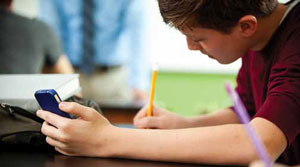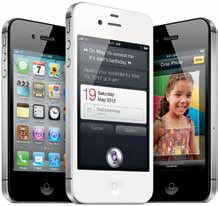They Said It: SMARTPHONES GO TO SCHOOL

1 The students know how to use these technologies. They use them daily. They text, take and send pictures, take videos/movies and send them, and they access the Web. Teachers do not have to spend class time teaching students the new technologies. Even when teachers “teach” a new program, such as Yodio, the students already know how to take pictures, upload them, record their voice, and send voice files.
2 The students always have these mobile learning devices with them. They may forget their notebook. They may leave their textbook home. They may be without a pen. However, they will have their cell phone or smartphone with them.
3 The students can use their own mobile learning devices. Other than for a few disadvantaged students, the school does not have to provide the device. However, the school does need to provide access to its wireless network.
4 With QR codes, students can be a click away from learning resources. Students do not have to turn on a computer, log in, and then type in a Web address. The students instantly go from scanning in the QR code to clicking on the link(s).
5 Students can easily be producers of information. They can take pictures to document environmental concerns in their community and make those into a multimedia story such as with Yodio. They can audio record the interviews of various people as they talk about the importance of math in their careers. The students can make a movie about the various healthy habits of their family and friends for their physical education course. They have these tools on their phones and they know how to use the tools.
6 Due to the richness of Web resources, teachers can move students to higherlevel thinking. For example, students can easily contrast two images of the same incident for an English class. They can evaluate the bias in reporting by reading the same news story from different sources for a social studies class.

7 Students can be global in their learning. They can text a science survey about using paper in school to students in other states and other countries. Elementary students can text math word problems that come from students in other countries. For example, a school in Costa Rica might offer this problem: “If you are really hungry and you buy a “casado” (rice and meat dish) for 2,500 colones and a fruit drink for 400 colones, how much do you spend? How much is that in US dollars?
Tools and ideas to transform education. Sign up below.
Harry Grover Tuttle teaches English and Spanish courses at Onondaga Community College. He is also the author of several books on formative assessment.
